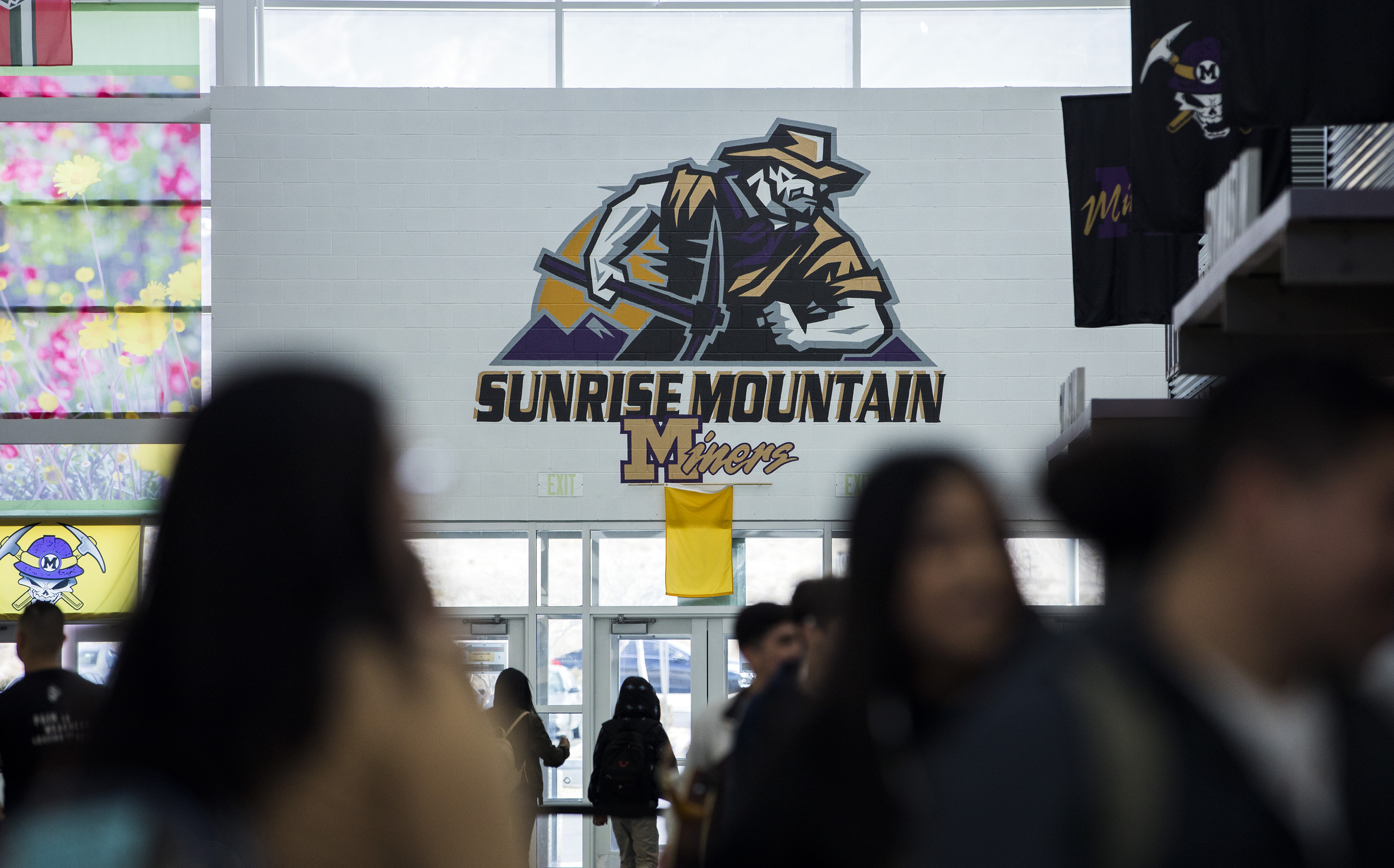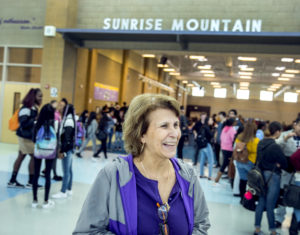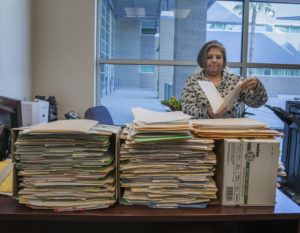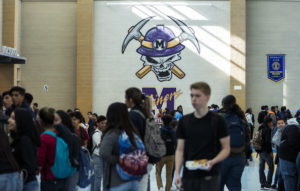How a once-struggling high school used detective work to boost its graduation rate

The sparkling new building called Sunrise Mountain High School, named for the rugged peak blanketing the horizon behind it, didn’t receive a warm welcome when it opened in 2009.
Students largely refused to don any school spirit wear. The athletic teams struggled to notch any victories. And, despite the sun-lit hallways and roomier classrooms, teachers didn’t necessarily want to be there either.
“It was really hard to make some ground,” said Principal Julia Llapur, who served as the school’s assistant principal at the time.

The lackluster enthusiasm stemmed from a variety of factors, including zoning changes that plucked students from their original high schools, district staffing decisions that placed teachers there involuntarily and a less-than-ideal location, Llapur said. The school sits in the far northeast valley, where highway access isn’t easy.
Academics suffered as a result. In 2012, the school’s graduation rate was just 36 percent. A year later, the graduation rate increased to 47 percent, but that was still low enough for it to be deemed the lowest-achieving high school in the state, Llapur said. The school, in turn, was enrolled in the district’s turnaround zone — a program designed to rapidly improve struggling schools by overhauling staff and adding more resources.
Five years later, the school’s journey reads more like a “Cinderella” story. Roughly 92 percent of its seniors received a diploma in June.
An improved school environment undoubtedly played a key role. But so did some good, old-fashioned detective work.
***
Hundreds of folders — each representing a student who has moved — lie on Diane Theobald’s desk at Sunrise Mountain High School. As the school’s registrar, she handles enrollment-related tasks, prepares academic transcripts and posts students’ grades.
It’s a tall order in a school with a transient population. School officials estimate that 45 students have withdrawn since late December, and roughly the same amount of new students have joined the school in that time period.
“They leave and then they come back to us,” Llapur said, describing the constant migration of students.
The arrivals and departures keep Theobald busy, but in the past few years, she has taken on another responsibility as well. She puts her sleuthing skills to work and tracks down “unsuccessful transfers,” a bureaucratic-sounding term that refers to students who simply stopped showing up to school.
While some may have moved without notifying the school, the data won’t reflect that at the end of the year if their whereabouts remain a mystery. They’ll be counted as dropouts, lowering the school’s graduation rate in the process. It’s a function of the four-year adjusted cohort graduation rate, the federal formula for how to calculate that number, which became the standard earlier this decade.
To prevent that from happening, school staff have made it their mission to find those students labeled as unsuccessful transfers.
“It’s just detective work,” said Theobald, who’s gotten so good at the gig that she occasionally trains other schools.

She scours social media for clues about where students may have gone, talks to their siblings and friends and calls any known phone numbers. If it appears a student has moved, she’ll cold-call the likely new school district and request verification along with the necessary information to complete the withdrawal.
Her dogged research has confirmed that former Sunrise Mountain students have moved to California, Texas, New York and even Mexico, among other locales. She doesn’t always solve the case, though.
“There’s a lot of leads you put out there and never hear anything back,” she said.
The detective work also involves finding students who actually did drop out — perhaps because they’re too busy working, had a child or got evicted from their home. School staff have walked through neighborhoods on Saturdays, knocking on doors where absentee students last lived. Dropout students who enroll in the district’s adult education program are no longer considered unsuccessful transfers, Llapur said.
But the ritual isn’t just about improving the all-important graduation rate. It’s also about ensuring the well-being of students and giving them every shot to succeed in the future.
“We’re hard on them; we pester them, but it’s because we really care about them,” Llapur said. “And I think the majority of them know that. We’ve got the kindest kids in the world, and all they need to know is you have their back and they will do anything for you.”
Case in point: A girl Theobald tracked down via Facebook and encouraged to return to school publicly thanked her at the graduation ceremony later that year.
“I never realized I had touched her like that,” Theobald said.
Mike Barton, the district’s chief academic officer, said some schools have hired support staff to help with these student-tracking efforts.
After all, no school wants to appear as though it’s performing poorly because of faulty data. A few years ago, for instance, the district realized that one student counted as a dropout had actually moved and later attended New York University, he said.
“It’s a big job,” he said. “It’s something that I think our principals and staff at those schools have gotten really good at doing.”
It’s also not the only reason graduation rates may have increased in recent years. The Class of 2017 was the first group of students that didn’t need to pass high school proficiency examinations to graduate. The state is transitioning to a new system that uses end-of-course examinations, which will factor into students’ final grades for a class.
***
From a numbers perspective, the staff’s efforts at Sunrise Mountain High School have paid off.
The school posted one of the largest graduation-rate increases among all Clark County schools — jumping from 76 percent in 2016 to 92 percent last year. By the end of the last school year, the staff had whittled down its list of unsuccessful transfers to 28 students who were later deemed dropouts. As of mid-January, the school’s list of unsuccessful transfers stood at 35 students, but Llapur and Theobald are confident they can chip away at that number in the coming months.
Their work, Llapur said, “is never over.”

That’s why you’ll often find her traversing the hallways during class changes, greeting students by name. She wants to keep the climate positive and let students know they’re supported.
These days students actually exhibit “Miner pride,” a nod to the school’s mascot, and staff turnover is small, Llapur said. She also has been receiving a steady stream of zone-variance requests from students who want to attend the school despite not actually being assigned to it.
And the improved graduation rate has led to a paradigm shift: More students are applying to and attending colleges.
“Before, it was almost like a pipe dream for these kids,” Llapur said.
